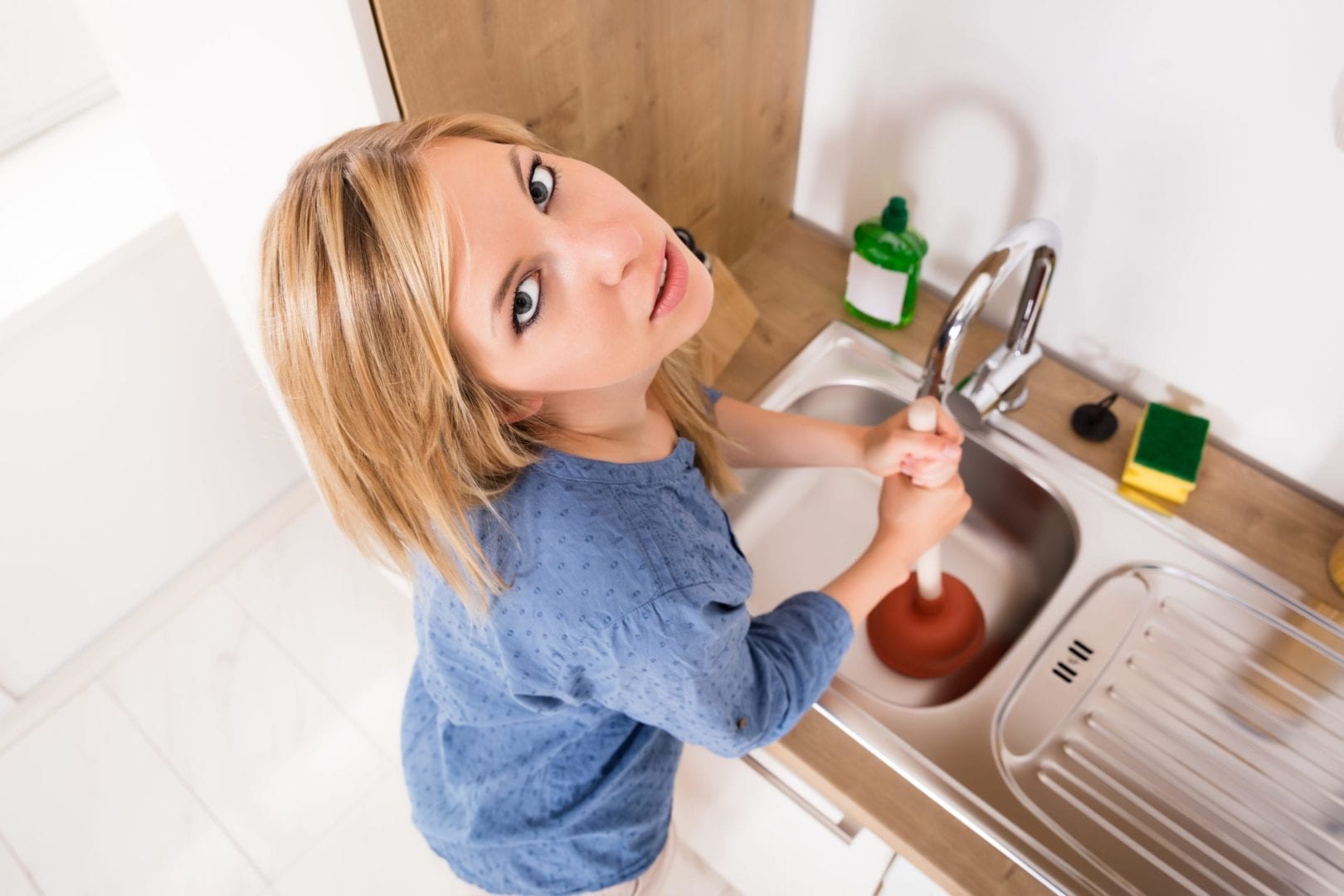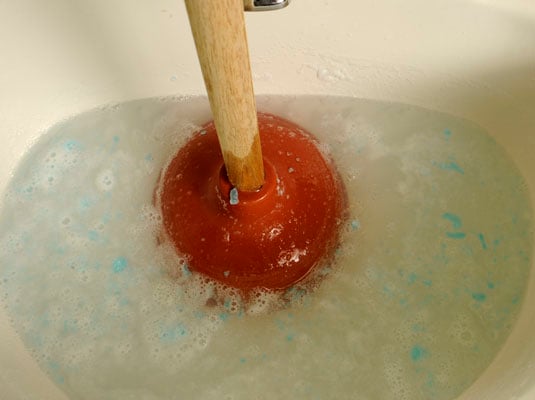Here further down you can find a bunch of extremely good insight about How to Unclog Your Sink with a Plunger.

Intro
Correct maintenance of home drains pipes is vital for stopping clogs and guaranteeing smooth water flow. Among the secret devices in every homeowner's toolkit is the bettor, along with various drain cleansers designed to tackle stubborn clogs effectively. This short article checks out exactly how to use bettors and drain cleansers successfully to maintain your drains flowing easily.
Section 1: Understanding Plungers
Kinds of Plungers
There are a number of sorts of bettors available, each created for different kinds of drains and clogs. The most usual types include mug plungers, flange bettors, and accordion plungers.
Just How Plungers Work
Bettors service the principle of developing pressure and suction to displace clogs. When correctly used over a drainpipe, they produce a vacuum cleaner that can pull out particles or separate blockages.
Picking the Right Plunger
Picking the right bettor depends on the kind of drainpipe and the nature of the clog. Cup bettors are perfect for sinks and tubs, while flange bettors are much better matched for toilets because of their style.
Usual Blunders with Bettors
Avoiding these mistakes makes sure efficient plunging: inappropriate seal around the drainpipe, not enough pressure, and unclear surrounding debris.
Section 2: Using Plungers Effectively
Preparation
Prior to diving, make sure the plunger covers the drain entirely and creates a limited seal. Clear any type of visible particles around the drain opening.
Technique
Beginning with mild plunging motions to construct suction. Boost stress slowly, using a constant rhythm. Repeat as needed until the drainpipe gets rid of.
Repairing Tips
If diving doesn't work, try adjusting the seal, applying petroleum jelly for a better seal, or making use of a various kind of plunger.
Section 3: Recognizing Drainpipe Cleaning Company
Types of Drainpipe Cleaners
Drain cleansers can be chemical or enzymatic. Chemical cleaners utilize solid chemicals to liquify clogs, while enzymatic cleaners utilize all-natural enzymes to break down raw material.
Just How Drainpipe Cleaning Company Work
Chemical cleaners react with clogs to dissolve them, while enzymatic cleansers break down natural products like hair and oil without damaging pipelines.
Safety and security Factors to consider
Constantly use gloves and eye protection when using chemical drainpipe cleansers. Make sure appropriate ventilation and follow manufacturer guidelines meticulously.
Eco-Friendly Alternatives
Take into consideration utilizing vinegar and cooking soft drink or enzyme-based cleaners for eco-friendly alternatives that are safer for pipelines and the atmosphere.
Area 4: Utilizing Drainpipe Cleansers Properly
Application Methods
Put chemical cleaners directly right into the drain opening. Enable them to benefit the recommended time prior to purging with hot water. Enzymatic cleansers need to rest overnight.
Preventative measures
Stay clear of mixing various sorts of cleansers, as this can create hazardous fumes. Never make use of chemical cleaners in conjunction with a bettor, as splashing can take place.
Taking Care Of Stubborn Obstructions
For consistent obstructions, consider using a plumbing serpent or calling a professional plumbing professional to prevent damages to pipes.
Final thought
Finally, understanding exactly how to use plungers and drain cleansers properly is important for preserving healthy plumbing systems. By selecting the right tools and methods, house owners can tackle minor clogs and avoid major plumbing concerns down the line.
How To Properly Use A Plumbing Snake To Clear Drains
When any drain clogs in our home arise, we tend to gravitate toward the plunger and little else. In cases where the plunger and its vacuum-created pressure are not able to clear clogs, many immediately move to harmful chemicals or simply call their plumber to fix the issue.
we’re happy to help with all drain cleaning needs and concerns. This includes informing you on a few other home remedies you may have at your disposal for minor to moderate clogs, one of which is the use of a plumbing snake. Many people have never used one of these before – let’s go over the steps to take when your drain clogs and you have a plumbing snake available.
Attempt Plunger Use
The first step here, as we noted above, should indeed be to grab your plunger when you notice a drain clog and attempt to resolve it this way. If you’re unsure how to use a particular type of plunger, our plumbers can answer any questions you have. If this doesn’t do the trick, however, you move on to the snake.
Locate And Prepare Snake
A plumbing snake is a metal or plastic device that’s generally about a quarter of an inch thick. It’s design with significant extensions, meant to reach down into your clogged drain and push the clog out. Snakes also contain drain augers that will latch onto and push stubborn blockages.
If your plunger doesn’t clear a clog, locate your snake and bring it to the drain in question. We also recommend keeping a bucket nearby to collect the clog once you pull it out, plus we’d advise wearing goggles and possibly protective gloves.
Feed Snake
Once you’re ready to go, feed the snake slowly down the drain, using the crank device it comes with to keep it moving until it finds the clog. Once this happens, much of the clog will be latched onto the coil so you can pull it out, while the rest will simply break up and flow downward.
Detach Debris
Remove the snake slowly from the drain, and once you’ve done so, pick off any debris that’s stuck to the coil. This is another area where wearing gloves is a must.
Flush Drain
Finally, take a few minutes to ensure the snake has done its job correctly. If you’ve been using it on a toilet, flush the toilet a couple times and make sure everything flows well. If you’ve used it on a different drain, flush it with some room temperature water.
https://www.mybuddytheplumber.com/blog/how-to-properly-use-a-plumbing-snake-to-clear-drains/

Application Methods
Put chemical cleaners directly right into the drain opening. Enable them to benefit the recommended time prior to purging with hot water. Enzymatic cleansers need to rest overnight.
Preventative measures
Stay clear of mixing various sorts of cleansers, as this can create hazardous fumes. Never make use of chemical cleaners in conjunction with a bettor, as splashing can take place.
Taking Care Of Stubborn Obstructions
For consistent obstructions, consider using a plumbing serpent or calling a professional plumbing professional to prevent damages to pipes.
Final thought
Finally, understanding exactly how to use plungers and drain cleansers properly is important for preserving healthy plumbing systems. By selecting the right tools and methods, house owners can tackle minor clogs and avoid major plumbing concerns down the line.
How To Properly Use A Plumbing Snake To Clear Drains
When any drain clogs in our home arise, we tend to gravitate toward the plunger and little else. In cases where the plunger and its vacuum-created pressure are not able to clear clogs, many immediately move to harmful chemicals or simply call their plumber to fix the issue.
we’re happy to help with all drain cleaning needs and concerns. This includes informing you on a few other home remedies you may have at your disposal for minor to moderate clogs, one of which is the use of a plumbing snake. Many people have never used one of these before – let’s go over the steps to take when your drain clogs and you have a plumbing snake available.
Attempt Plunger Use
The first step here, as we noted above, should indeed be to grab your plunger when you notice a drain clog and attempt to resolve it this way. If you’re unsure how to use a particular type of plunger, our plumbers can answer any questions you have. If this doesn’t do the trick, however, you move on to the snake.
Locate And Prepare Snake
A plumbing snake is a metal or plastic device that’s generally about a quarter of an inch thick. It’s design with significant extensions, meant to reach down into your clogged drain and push the clog out. Snakes also contain drain augers that will latch onto and push stubborn blockages.
If your plunger doesn’t clear a clog, locate your snake and bring it to the drain in question. We also recommend keeping a bucket nearby to collect the clog once you pull it out, plus we’d advise wearing goggles and possibly protective gloves.
Feed Snake
Once you’re ready to go, feed the snake slowly down the drain, using the crank device it comes with to keep it moving until it finds the clog. Once this happens, much of the clog will be latched onto the coil so you can pull it out, while the rest will simply break up and flow downward.
Detach Debris
Remove the snake slowly from the drain, and once you’ve done so, pick off any debris that’s stuck to the coil. This is another area where wearing gloves is a must.
Flush Drain
Finally, take a few minutes to ensure the snake has done its job correctly. If you’ve been using it on a toilet, flush the toilet a couple times and make sure everything flows well. If you’ve used it on a different drain, flush it with some room temperature water.
https://www.mybuddytheplumber.com/blog/how-to-properly-use-a-plumbing-snake-to-clear-drains/

As a person who reads about A Guide to Plungers (and How to Use Them), I think sharing that piece of content was valuable. Loved our content? Please share it. Help somebody else discover it. I cherish your readership.
Get Started